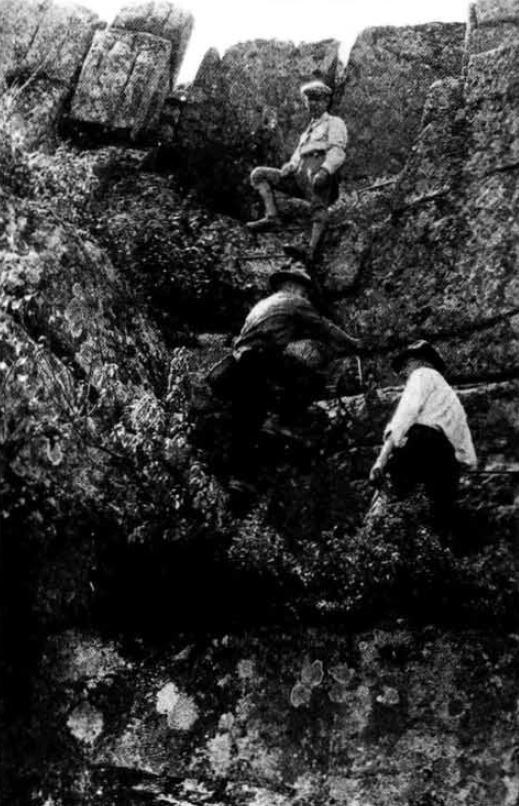Last updated: October 14, 2021
Article
Precipice and Beehive: A History

Michael Custodio. NPS Photo.
While George Dorr was a primary expander of the early trail networks of Acadia National Park in the Sieur de Monts Spring area, Rudolph Earnest Brunnow (1858-1917) was simultaneously involved in the construction of several of the most rigorous trails on the island. Brunnow served as Bar Harbor VIA Path Committee chairman from 1912-1917. During this time, he laid out the Precipice Paths up The Beehive and Newport (now Champlain) Mountain, and the Orange and Black Path. These routes, carefully designed to lead walkers through boulder fields and up precipitous cliffs, testify to the skill of Brunnow for laying out remarkable trails, much like the talents of his predecessors Herbert Jaques and Waldron Bates. Like Dorr's memorial trails, Brunnow's trails held to high standards of construction with long rows of cut and uncut steps, yet contained much more ironwork.
Like Jaques, Brunnow concentrated most of his trail construction on Newport [Champlain] Mountain near his summer cottage "High Seas" north of Schooner Head. Brunnow named the Orange and Black Path, built in 1913, after the school colors of Princeton University, where he was a Professor of Semitic Philology. The path paralleled the Park Loop Road but offered much more dramatic views and directed walkers through interesting geological features including fissures, talus slopes, ledges, and boulders. A viewpoint above Schooner Head was made accessible by a set of steps and railing, later known as the "hanging steps." Brunnow laid out the route but credits Andrew Liscomb, the Bar Harbor IA's Superintendent of Paths, for supervising the construction work.

NPS Photo
Up the sheer face of the precipice the path leads, precipitously enough in any place along its stretch, now running alone as any ordinary path and now forcing the climber to ascend by means of spikes driven into the cliff in double rows to form a ladder with hand rails on either side. This path is absolutely safe, but care should be taken not to throw down any stones, as they might start a landslide. The path is rather dangerously in the early spring when the frost is liable to dislodge stones and cause them to roll down the mountain side, but after the frost is out and the ground is settled back into place, the path is absolutely safe, and women as well as men may enjoy clambering over it.
A caution regarding spring thaws was not unfounded, since sections of the Orange and Black Path and Precipice Path have been sunsequently lost and rebuilt due to rockslides.
At the time of construction of the Precipice Path, Professor Brunnow also proposed that a rustic teahouse be constructed "in the pretty little forest just below the summit of the eastern side." The structure was never built. Ironically, Herbert Satterlee, who constructed a teahouse on Great Head, criticized Brunnow's ladder trails. He complained that he and his wife had long enjoyed viewing eagles at an eyrie on The Beehive, but once the ladder trails were put in, the eagles were frightened off by climbers. Satterlee also through that such trails were a danger to inexperienced climbers and distasteful to experienced climbers. Brunnow's contributions to the trail system were cut short when he died suddenly from pneumonia in the spring of 1917, leaving behind some of the most challenging, controversial and highly crafted trails in the Bar Harbor system.

Michael Custodio. NPSPhoto
